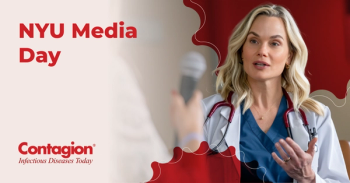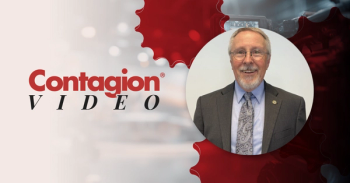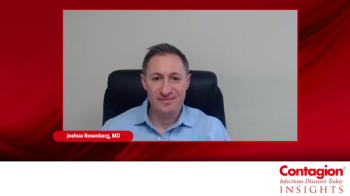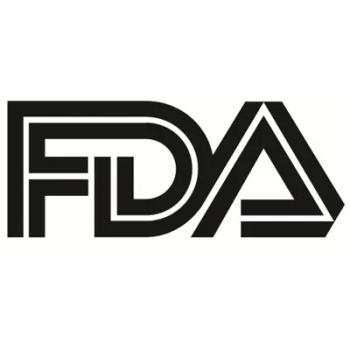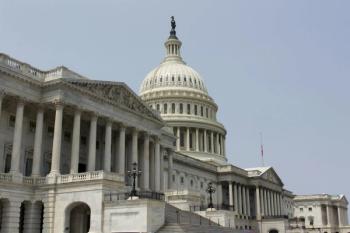Polio: Reviewing Its History and the Development of Vaccines
Andrea Prinzi, PhD, MPH, SM(ASCP), provides insights on how polio cases rose despite sanitation and hygiene improving as well as Jonas Salk’s and Albert Sabin's approaches to their vaccines' development.
Polio is an ancient disease with limited evidence of its existence throughout antiquity. It was not until the late 19th century that the disease became well-documented.1
An increase in polio cases coincided with the emergence of the Industrial Age and the transition of people moving from mostly rural, farming environments to cities. This led to more people living closer together and the potential for greater transmission. And paradoxically, the increase of sanitation strategies that came about during this period led to more polio cases, explains Andrea Prinzi, PhD, MPH, SM(ASCP).
“There was this level of protection that was occurring in areas where there weren't the best hygiene or sanitary conditions,” says Prinzi of the agrarian society. “There were areas where there was this level of protection, particularly among parents of young children. They were passing some level of protection to their children by having been exposed to the virus, either through breast milk or carriage of the infant or fetus. There was protection that was happening, and then when everything got really clean, some of that protection was actually lost. Cases started to spike. It's this really strange example of where we saw sanitary improvements contributing to new cases of infection.”
Prinzi is the field medical director of US medical affairs in clinical and translational science at bioMérieux, and she examined this subject in an article she wrote for the American Society for Microbiology in the past year titled “
The Development of the Polio Vaccines
Jonas Salk, MD, is well-known as the creator of one of the polio vaccines. What may not be as well-known is how he was very different in the way he worked and his approach to vaccine development.
In terms of how he worked, Prinzi says he worked with a small team without the backing of the pharmaceutical industry. However, she says he did have some government funding, which ruffled the feathers of a contemporary, Albert Sabin, MD, who was the creator of the oral polio vaccine.
Prinzi says Salk took a divergent path from the existing line of scientific work being done at that time because he looked to develop an inactivated polio vaccine instead of trying to develop a vaccine with a live virus, the attenuated immunization, like Sabin was working on.
“He [Salk] had a lot of reservations around using something that was a live attenuated virus, even though that was what a lot of the research was being focused on at the time,” Prinzi says. "According to the academic and research community, he was going outside the box. He was doing things his own way, being nontraditional, which they didn't really love. And he even said at one point that he just marches to the beat of his own drummer.”
Vaccine Testing, Losing Public Trust, and Vaccine Hesitancy
Both Salk and Sabin’s testing methods for their polio vaccination were questionable. Salk and Sabin tested the vaccines on themselves, their families, and marginalized populations such as children with disabilities and incarcerated individuals.
“A lot of ethics review material came from the polio saga,” she says.
Despite these issues, both vaccines were eventually used by the public and had great success. Salk's vaccine was developed first and used widely in the US. In fact, it has been reported that 2 years before the vaccine was widely available, the average number of polio cases in the US was more than 45,000. By 1962, several years after vaccination began, that number had dropped to 910.2
Prinzi points out there were issues of public mistrust about the polio vaccine back then. Although Salk’s vaccine was a great success as a public health initiative, one major issue did arise that led to the transition to Sabin’s vaccine.
“There was one manufacturer in particular that did not follow the very specific instructions for how to produce this killed virus vaccine, and some batches actually went out with live virus in the vaccine, and this led to disastrous consequences and huge fallout,” Prinzi says. “And even though this is really related more to a manufacturing error than the vaccine—as it had been truly designed and was intended to be developed. This led to a ton of mistrust in the killed vaccine. And so with the Salk vaccine, folks didn't want to use it anymore, and they wanted a solution that was not that vaccine—even though that vaccine had been demonstrated to be safe and effective in tons of people.”
Because of this, the US transitioned to Sabin’s oral vaccine, which was being used globally, especially in places where there was limited infrastructure. Prinzi points our Sabin’s vaccine was inexpensive and easy to use. It could be simply dropped onto a sugar cube and given to people or in a recipient’s mouth.
However, over time, the US switched back to the inactivated polio vaccine because of some cases of vaccine-derived polio cases in Sabin's immunization.
Although there were issues associated with both vaccines, ultimately, their development and deployment have led to the near global eradication of polio. There are only 2 countries in the world today where polio is endemic: Pakistan and Afghanistan.3 This stands as a monumental achievement and a shining example of the development of these vaccines as well as the public health immunization efforts that worked greatly toward eradication.
This is the first in a series on polio looking at its history, the extraordinary work to create a vaccine, fundraising for the vaccine, and the current public health climate as it relates to vaccines. In the next installment of our series, Prinzi discusses the March of Dimes fundraising efforts and the modern-day public health strategies to reduce polio.
References
1. Prinzi A. Polio's last stand: the global fight for eradication. American Society for Microbiology. September 19, 2024. Accessed July 27, 2025.
https://asm.org/articles/2024/september/polio-s-last-stand-the-global-fight-for-eradicatio
2. History of Salk. Salk Institute for Biological Studies. Accessed July 27, 2025. https://www.salk.edu/about/history-of-salk/jonas-salk
3. Poliomyelitis. World Health Organization. Accessed July 27, 2025.
https://www.who.int/health-topics/poliomyelitis
Newsletter
Stay ahead of emerging infectious disease threats with expert insights and breaking research. Subscribe now to get updates delivered straight to your inbox.

